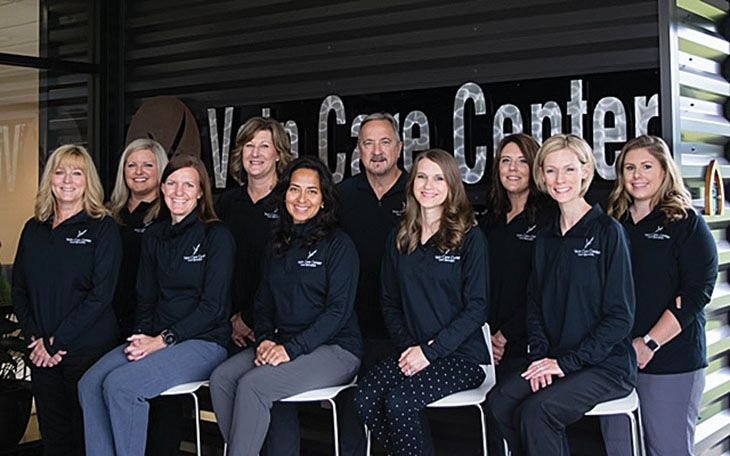
Paths to practice is a new series intended to highlight physicians different journeys into the vein specialty. Here VEIN Magazine’s newest editorial advisor, Dr. Manu Aggarwal, shares her personal story.
There was a fork in the road. Three kids and an upper extremity microvascular orthopedic surgeon husband didn’t really leave time for me. I thought I could get away with being a stay at home wife and mother. However, that wasn’t going to jive with my husband, nor my parents. So after working two half days a week as a family physician for almost two years, things were about to change.
A little over ten years ago, an interventional radiologist in my second hometown of Lima, Ohio asked me to cover his office so he could travel overseas for a month. I agreed, only seeing patients for evaluation and treatment planning. Once he returned, he asked me to join the practice and help him evaluate patients. He would continue to do all the procedures.
Six months into my new job, I was dissatisfied. In my family medicine practice, I was able to do minor procedures and I was very content in the complexity and variety of my patient concerns. In venous medicine, some of the monotony of venous reflux, varicose veins, and spider veins became dull and I felt I was losing myself.
After discussing my quandary with my employer, we decided that he would train me to perform venous procedures including sclerotherapy, ambulatory phlebectomy, endovenous laser ablation, practice development, and more. After three and a half years, the training was done, and he again left to go overseas for a month.
In those three and a half years’ time, we underwent an audit for our vascular accreditation, added a new technical director, expanded into some laser treatments for cosmetic, and brought billing back in-house.
I joined what was then the American College of Phlebology (ACP). I also became a member of the American Venous Forum (AVF), American Society for Laser Medicine and Surgery (ASLMS), and other organizations. The ACP, now called the American Vein and Lymphatic Society (AVLS), was particularly instrumental in building my knowledge. The membership and education team were supportive despite different ideas in the community about who should treat venous disease. I received the Walter P. de Groot award and while I was unable to attend the conference to fulfill the obligations of the award, I was honored to have received the education award and it allowed me to understand the necessary educational needs of this specialty.
Still, coming into this field was difficult as a “non-core” physician. Some of the raised eyebrows even in my own community made me doubt this path that otherwise seemed to naturally fit after three and a half years. My own family medicine colleagues felt I was a sell-out. These stresses were not easy to overcome. I even thought of leaving venous medicine and in 2013 when I was asked to take over the practice, I hesitated. Though I knew I was there to help patients and do no harm, I felt already judged by my peers.
Despite my reservations, I did take over the practice. Encouraged by my husband and faced with the reality that ours was the only vein practice serving our smaller local community, I opted to carry on, and I haven’t looked back. The level of care we have provided is beyond what I could have ever imagined. In the last almost three years, we have also added lymphedema therapy to address those patients who not only may have phlebolymphedema, but also other medical conditions requiring this treatment. The level of complexity our patients have made my commitment to patients even more satisfying.
As a physician in private practice in the vein space, the economics of providing care is utterly apparent. I have seen firsthand how much time is required to process and receive approval for procedures. I ride the tumultuous waves of reimbursement and a host of other issues those of us in private practice face (some of those issues I hope to speak about here in the pages of VEIN).
I am proud of our practice; it is one of the first 50 in the US that achieved Vein Center Accreditation by the IAC and we now have maintained our IAC Vascular accreditation since 2007 and Vein Center since 2015. I also achieved additional certification by the American Board of Venous and Lymphatic Medicine (ABVLM) in 2016 and have maintained my board certification in Family Medicine by the American Board of Family Medicine. I expanded our services to include more cash-based cosmetic services, and always seek to evolve our practice in ways that will allow us to continue to provide proper, comprehensive care for venous patients.
What a decade of change this has been for me and the practice. The personal and professional growth has been immense for everyone and I cannot wait to see what this next decade may bring. I am sure it will be a roller coaster as changes in health care and vascular medicine occur quickly. These are cautiously exciting times and I wouldn’t change the fork in the road I took a decade ago.


